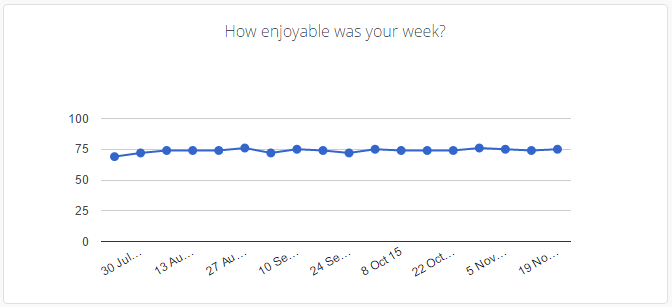One of the most powerful things a leader can do, is run an employee opinion survey. Yet there’s more to it than just receiving the resulting report. In this article, I’ll outline 13 ways to get more from your next survey.
Regardless if you run these surveys as an ongoing activity, or do them as a once off every month or so, with a little planning, and then following through with some actions after the report has come through, you can get a lot more out of the exercise. Let’s discuss what to do before you send your next survey, and then move on to what actions to take once it has been completed.
Before embarking on an employee opinion survey
Choose the right questions
You need to be careful when choosing the right questions that you don’t fall into a common trap of asking leading or loaded questions.
Leading questions bias respondents by subtly directing them toward particular answers. These items usually provide judgments about ideas or concepts before the actual questions are asked — or the wording of the questions may just be biased from the outset. Leading questions can make respondents feel as if there is an obviously “correct” response, and that they would be foolish to answer otherwise.
An example of a leading opinion question may be “Most people are happy with their work environment. Are you happy as well?”
Loaded questions can be just as harmful. For example, words like ‘hate’ or ‘love’ are typically loaded with emotion. Whilst it is great to ask ‘Are you happy in your role?’ you shouldn’t ask something loaded like ‘Do you love your role as much as your colleagues?’.
Set the most suitable poll frequency

In our team, we poll every week, and believe that has the best chances of review, and quick action. However, not everyone feels the same. A recent study shows the average 6Q user takes 1 min 46 seconds to complete their poll, so we have evidence that it is typically quicker than ordering or making a coffee in the office.
Decide on anonymous or individual
Some employee survey systems, such as ours, allows you to choose between collecting anonymous feedback and collecting personally identifiable feedback (what we call ‘Individual’). You need to determine a sense of the current culture, and if your employees will feel comfortable answering a survey, if they know you will have each response identifiable to the employee.
Let your team know why you are doing this
It’s very important to put the survey in context with why you are undertaking it. This can be as simple as a group email to the team stating in simple terms what the survey is measuring, and why you feel it is important that you know.
Another concept we have seen some of our customers use, is to arrange a team meeting where the subject is broached and discussed.
Set the right expectations with your team
Whilst it is important to explain the why in doing an employee opinion survey, it is equally as important to explain what you expect. Make sure you let them know there are no right or wrong answers, and that all feedback will be taken on respectfully and without consequence. This may seem like common sense however there are plenty of individuals who will feel that they have to answer in a particular way.

Image: Dennis Crowley, Flickr.
After you’ve received your employee opinion survey results
These actions need to be addressed quickly. The problem with many surveys is the time they take to interpret the results, filter down to management and then slowly trickle down to employees, if at all. To get the most out of your employee opinion survey, these steps should be taken within a few days after you’ve received the results of the survey.
Review them without being defensive
If you receive something that you receive as negative, you should take a moment to take a deep breath and avoid any defensive reaction. If there is truth to what the feedback includes, then just personally accept it. Accept it without judgment of yourself or the management team. We all know that recognition of a shortcoming is the first step toward correcting it. Rather than act defensively, you should be pleased you have been given this opportunity to improve.
Share the survey results with your team
Arrange a time to run a town hall or open agenda workshop, where everybody gets to have a say. Be careful not to allow management to dominate the meeting; the purpose of this workshop or meeting is to discuss openly the results, and how the organisation can improve or celebrate their successes.
According to studies by UCLA professor Albert Mehrabian, body language accounts for 55% of a first impression; 38% comes from tone of voice; 7% comes from our actual words.
Take notice of what your team are saying
There is a lot to be said for meeting in person when discussing the results., Much can be inferred by tone and body language. Be careful to actively listen, and don’t dismiss others views, even if you feel that they are misguided.
Create and assign a list of actions
Before sharing results with their teams, managers should explain to team members the concept of employee engagement and how the survey is used to measure engagement. Managers should then facilitate an open discussion about the survey results, item by item, encouraging input from all team members. Finally, managers and their teams should decide which items the team should work on, decide what actions need to be taken to improve engagement, assign “owners” to each task, and set timelines and dates for follow up.
Run the employee opinion survey again
Great work! Now that you have run one, don’t stop. The best way to get a sense of improvements or sentiment is to use employee opinion survey tools regularly.
What you shouldn’t do with your employee opinion survey
We’ve discussed a number of actions that great leaders do before and after they survey their team on their opinions. However, there are also a number of items you should be careful to avoid. Let’s run through some of them.
Ignore the results
There is a real feeling among certain groups of employees that if you ask for feedback, and they give it, then you’ll do something with that feedback. You should always show gratitude for the feedback, and discuss ways in which you plan to use this information.
Let the actions fade away
You’ve asked your team a question, they have answered, you’ve agreed to a list of actions; now make sure you either follow through, or let the team know what their status is. People understand if an action turns out to be something not easily done, but they don’t often approve of just being ignored.
Decide the surveys are ‘wrong’
If you aren’t happy with the results of your employee opinion survey, it is very likely that these represent the recipients answers and sentiment, not the survey software itself. If you believe that you asked the wrong questions, you can always ask different questions on the next scheduled survey. The survey isn’t wrong as much as you were surprised at the response.
In Summary
I hope that these 13 methods that I have included help you get the most benefit out of your next employee opinion survey.
To cover them quickly, don’t forget before embarking on an employee opinion survey, you should consider;
- Choosing the most appropriate questions,
- Setting the most suitable poll frequency,
- Deciding on anonymous or individual,
- Communicating the reasons with your team, and;
- Setting the right expectations internally.
Then, once you have received the survey results, you should;
- Review them without becoming defensive,
- Share the survey results with your team,
- Take notice of what your team are saying,
- Create and assign a list of actions, and;
- Run the employee opinion survey again.
What you definitely shouldn’t do with your employee opinion survey;
- Ignore the results,
- Let the actions fade away, and;
- Decide the surveys are ‘wrong’.
I wish you all the best of luck with your next employee opinion survey!




